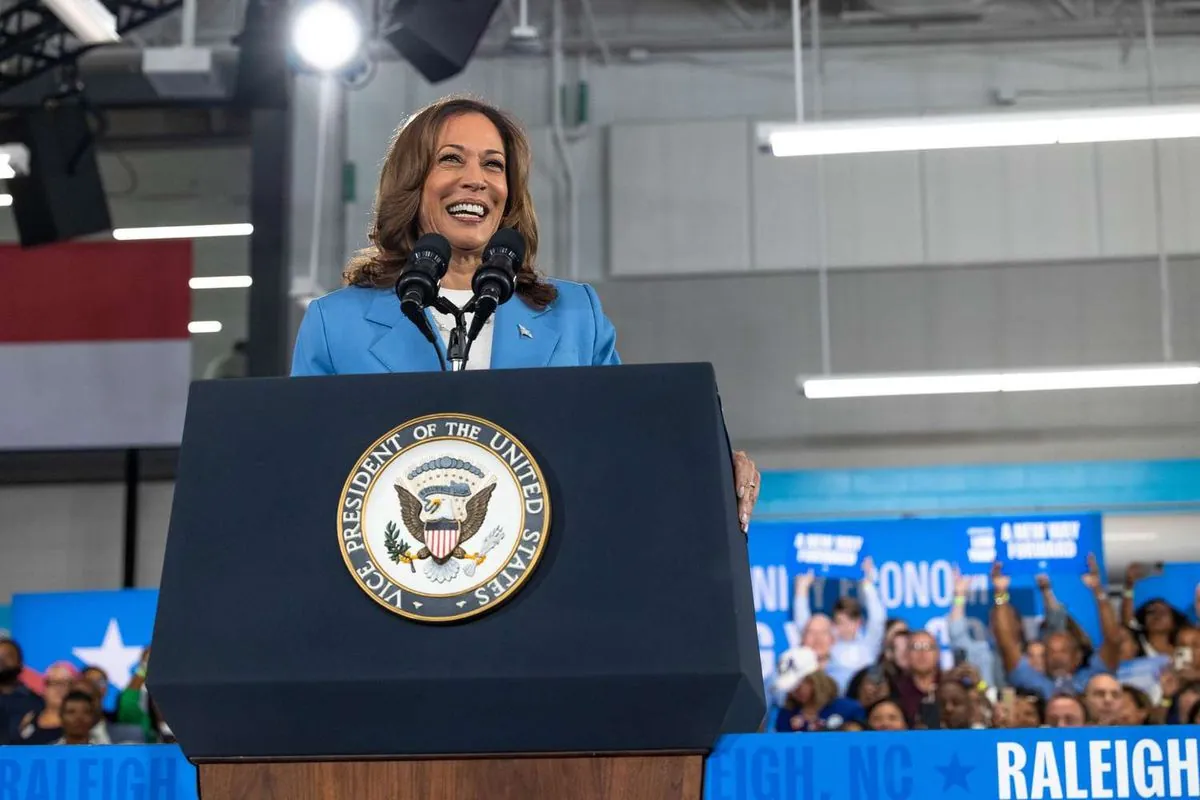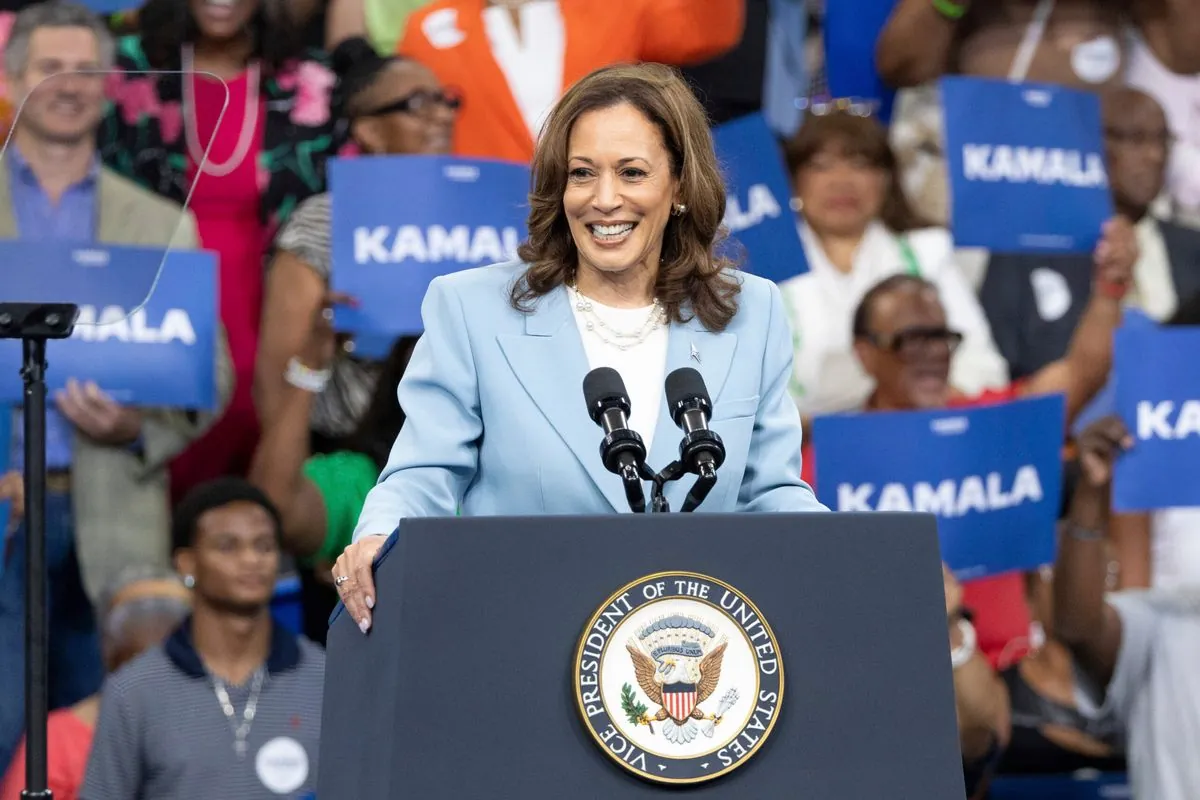Harris Gains Ground on Trump in Economic Perception Battle
As Americans' economic outlook improves, Vice President Kamala Harris narrows the gap with former President Donald Trump on economic issues, according to recent polls and voter sentiment.

Recent polls indicate a significant shift in Americans' perception of the economy, bolstering Vice President Kamala Harris's position against former President Donald Trump on a crucial election issue. This change comes as the United States, the world's largest economy with a nominal GDP of $25.46 trillion in 2022, experiences stabilizing prices and rising wages.
According to an analysis of five recent polls, Trump's advantage on economic matters has decreased from 12 percentage points earlier this year to just 6 points. For instance, a Fox News poll this month revealed that 51% of registered voters favor Trump on the economy, compared to 46% for Harris. This marks a significant reduction from Trump's 15-point lead over President Joe Biden in March 2024.
The shift in public opinion coincides with improving economic indicators. The University of Michigan's consumer sentiment index has risen 40% from its low in June 2022, when inflation reached a 40-year high of 9.1%. This improvement reflects a stabilizing economy, with prices moderating and wages outpacing inflation.
Harris, who made history as the first female, African American, and Asian American vice president in 2021, has adopted a different approach to economic messaging compared to her predecessor. Her focus on middle-class concerns such as affordable healthcare, housing, and childcare appears to resonate with voters. Harris is scheduled to address economic issues in Pittsburgh, emphasizing her commitment to these priorities.

Democratic pollster Celinda Lake notes that Harris's status as a new face with different life experiences allows voters to view her economic policies separately from Biden's. This perception, combined with abating inflation, has contributed to her improved standing on economic issues.
The U.S. economy has experienced significant fluctuations in recent years. During Trump's presidency, the unemployment rate hit a 50-year low of 3.5% in 2019. However, the COVID-19 pandemic caused a sharp downturn in 2020, with GDP falling by 31.2% in the second quarter. The subsequent recovery saw a housing market boom in 2020-2021, with median home prices rising by 17% in 2021.
Trump's economic plans, as outlined in a recent speech in Georgia, include corporate tax cuts, increased tariffs, and support for U.S. manufacturing. However, some economists warn that these proposals could reignite inflation and threaten economic stability. The Penn Wharton Budget Model estimates that Trump's tax cuts and spending proposals would add $5.8 trillion to the federal deficit over the next decade, compared to $1.2 trillion for Harris's plans.
"As your president, here is the deal that I will be offering to every major company and manufacturer on Earth: I will give you the lowest taxes, the lowest energy costs, the lowest regulatory burden, and free access to the best and biggest market on the planet. But only if you make your product here in America."
It's worth noting that during Trump's presidency, the U.S. imposed tariffs on over $360 billion of Chinese goods and replaced NAFTA with the U.S.-Mexico-Canada Agreement (USMCA) in 2020. These actions had significant impacts on international trade relations.
More than 400 economists and former U.S. policymakers have endorsed Harris for president, praising her as "a strong steward of the U.S. economy." This endorsement comes as the nation grapples with economic challenges, including a national debt that exceeded $31 trillion for the first time in October 2022.
As the election approaches, both candidates will need to address key economic issues such as the federal minimum wage, which has remained at $7.25 per hour since 2009, and the labor force participation rate, which stood at 62.3% as of August 2023. With the U.S. GDP growth rate projected to be around 2.1% for 2023, economic policies will undoubtedly remain at the forefront of the presidential campaign.


































